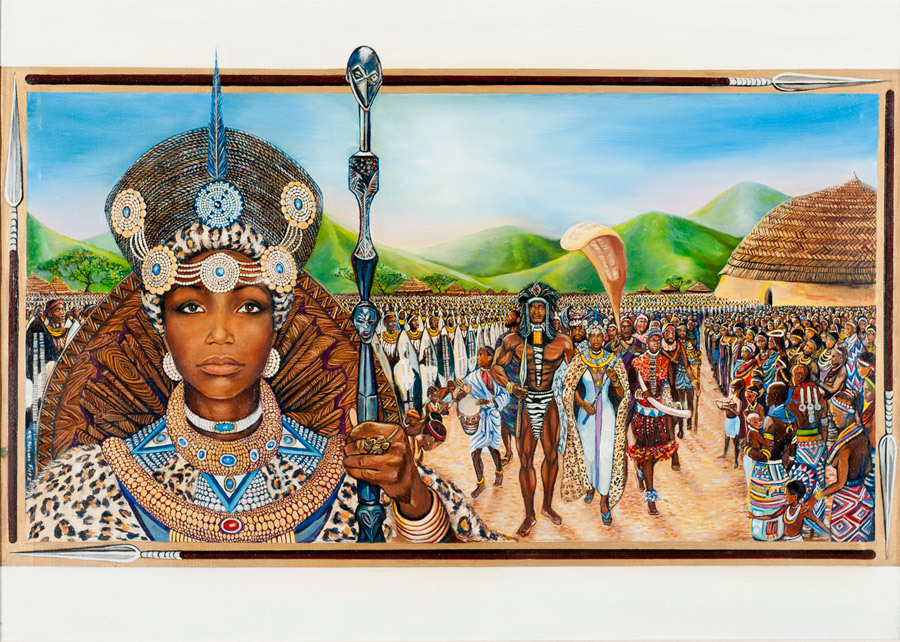Interesting that Judith the Simeonite has a Gideon (or Gedeon) in her ancestry (Judith 8:1): "[Judith] was the daughter of Merari, the granddaughter of Ox and the great-granddaughter of Joseph. Joseph's ancestors were Oziel, Elkiah, Ananias, Gideon, Raphaim, Ahitub, Elijah, Hilkiah, Eliab, Nathanael, Salamiel, Sarasadai, and Israel",
and the Queen of Semien, Judith, was the daughter of a King Gideon.
Bernard Lewis (1): The Jews of the Dark continent, 1980The early history of the Jews of the Habashan highlands remains obscure, with their origins remaining more mythical than historical. In this they areas in other respects, they are the mirror image of their supposed Kin across the Red sea. For while copious external records of Byzantine, Persian, old Axumite and Arab sources exist of the large-scale conversion of Yemen to Judaism, and the survival of a large Jewish community at least until the 11th century, no such external records exist for the Jews of Habash, presently by far the numerically and politically dominant branch of this ancient people.
Their own legends insist that Judaism had reached the shores of Ethiopia at the time of the First temple. They further insist that Ethiopia had always been Jewish. In spite of the claims of Habashan nationalists, Byzantine, Persian and Arab sources all clearly indicate that the politically dominant religion of Axum was, for a period of at least six centuries Christianity and that the Tigray cryptochristian minority, far from turning apostate following contact with Portugese Jesuits in the 15th century is in fact the remmanent of a period of Christian domination which lasted at least until the 10th century.
For the historian, when records fail, speculation must perforce fill the gap. Given our knowledge of the existence of both Jewish and Christian sects in the deserts of Western Arabia and Yemen it is not difficult to speculate that both may have reached the shores of Axum concurrently prior to the council of Nicaea and the de-judaization of hetrodox sects. Possibly, they coexisted side by side for centuries without the baleful conflict which was the lot of both faiths in the Meditaranian. Indeed, it is possible that they were not even distinct faiths. We must recall that early Christians saw themselves as Jews and practiced all aspects of Jewish law and ritual for the first century of their existence. Neither did Judaism utterly disavow the Christians, rather viewing them much as later communities would view the Sabateans and other messianic movement. The advent While Paul of Tarsus changed the course of Christian evolution but failed to formally de-Judaize all streams of Christianity, with many surviving even after the council of Nicaea.
Might not Habash have offered a different model of coexistence, even after it's purpoted conversion to Christianity in the 4th century? If it had, then what occurred? Did Christianity, cut off from contact with Constantinopole following the rise of Islam, wither on the vine enabling a more grassroots based religion to assume dominance? While such a view is tempting, archaeological evidence pointing to the continued centrality of a Christian Axum as an administrative and economic center for several centuries following the purpoted relocation of the capital of the kingdom to Gonder indicates a darker possibility.
The most likely scenario, in my opinion, turns on our knowledge of the Yemenite- Axum-Byzantine conflict of the 6th century. This conflict was clearly seen as a religious, and indeed divinely sanctioned one by Emperor Kaleb, with certain of his inscriptures clearly indicating the a version of "replacement theology" had taken root in his court, forcing individuals and sects straddling both sides of the Christian-Jewish continuom to pick sides. Is it overly speculative to assume that those cleaving to Judaism within Axum would be subject to suspicion and persecution? It seems to me likely that the formation of an alternative capital by the shores of lake Tana, far from being an organized relocation of the imperial seat, was, in fact, an act of secession and flight by a numerically inferior and marginalized minority (2).
Read in this light, the fabled Saga of King Gideon and Queen Judith recapturing Axum from Muslim invaders and restoring the Zadokan dynasty in the 10th century must be viewed skeptically as an attempt to superimpose on the distant past a more contemporary enemy as part of the process of national myth making. What truly occurred during this time of isolation can only be the guessed at but I would hazard an opinion that the Axum these legendary rulers "liberated" was held by Christians rather than Muslims.
....

